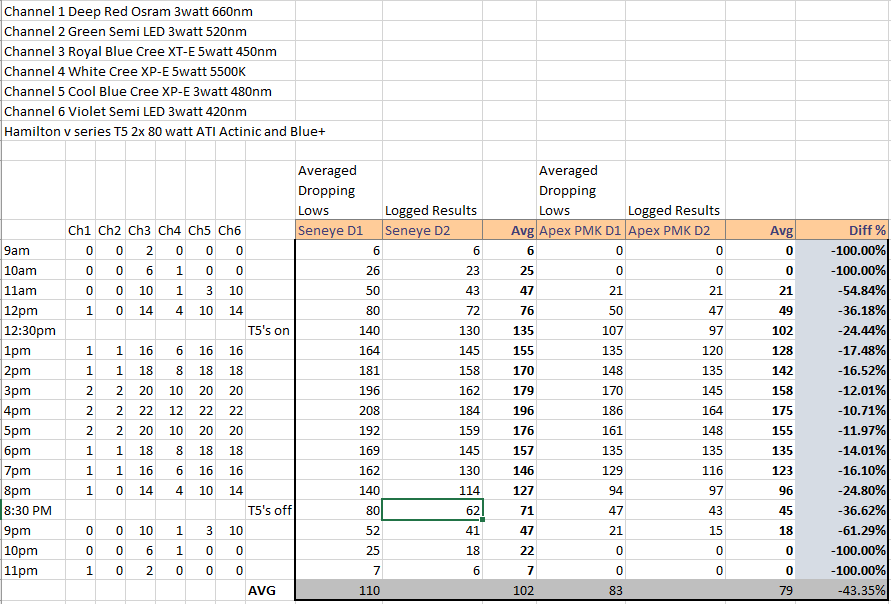I have one too and I talked to them as well. They also thought they may all be effected.Not all do. Apogee is working through it now and figuring out which batches have an issue and would impact the SQ and MQ 510's. I've already reached out to them.
Edit: and fwiw mine seems to be doing just fine picking up all the spectrums and even the low nm violet/actinics.
Post #38 I linked to the BRS video. and just after the 9 minute mark he mentions how a portion of the 510's are reading lower then the original 200 series sensors. Mine is not having that issue as seen above.
Sent from my SM-G935T using Tapatalk





